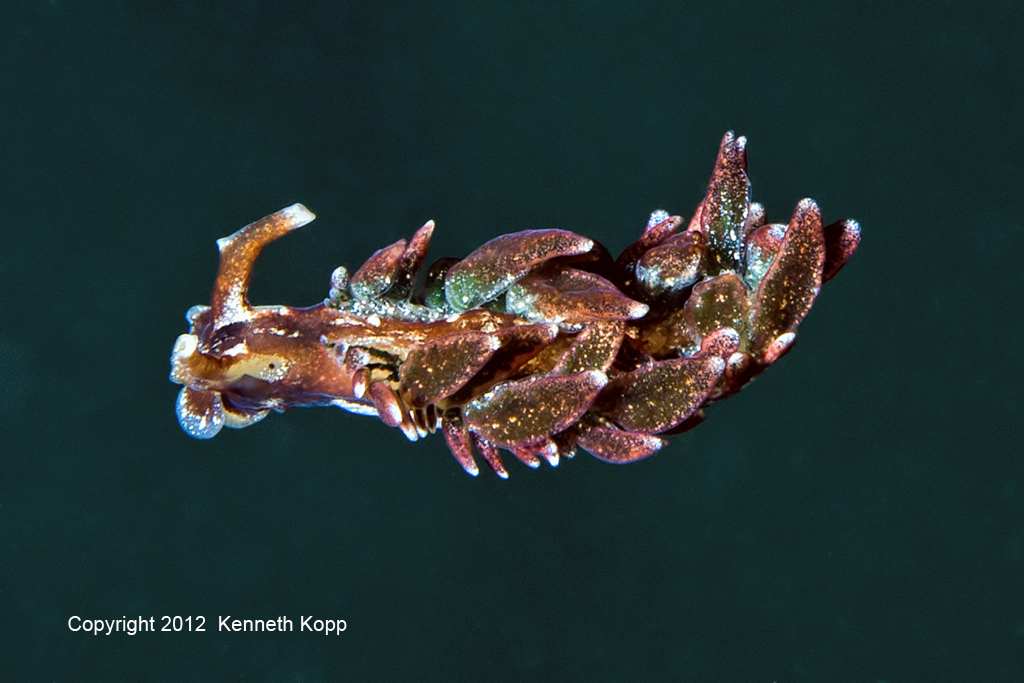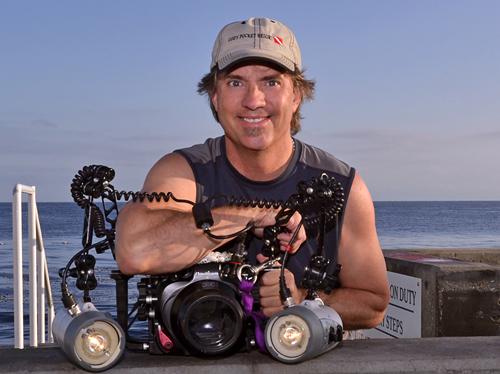 |
Aplysiopsis enteromorphae
Photo courtesy of Kenneth Kopp
Veteran's Park, Redondo Beach
Aug., 2012
With the exception of the larger, Elysia hedgpethi , sacoglossids, a.k.a Sapsucking Slugs, are rarely seen by divers. This is likely due to their size and cryptic nature, hiding in and on their algal food.
Identification can also be a chore. Sapsuckers fall into two main groups based on body form - the ones with mantle folds resembling sea hares (Bill Rudman's Sea Slug Forum) and the ones with cerata, resembling aeolid nudibranchs. This little one obviously has cerata.
Several species have eye spots, however no eye really exists, only an evolving branch of the optic nerve. These eye spots can be used in the identification of the critter, but can also cause confusion. A. enteromorphae is often confused with the similarly colored species, Hermaea oliviae and H. vancouverensis (Bill Rudman's Sea Slug Forum). The external differences are subtle, as each has a black eye spot in a white clearing. The coloration between the eyes is the distinguishing feature, A. enteromorphae having a wide brown patch, rather than a "V" that extends out the head tentacles. We can rule out the latter two based on geographic range also.
Ceratal color varies with size and food availability. Claudette and Ken's critter is obviously well fed, likely feeding on sea lettuce (Ulva) growing epiphytically on the seagrass , Phyllospadix, seen here. All sacoglossans have rolled rhinophores with can be clearly seen in Ken's photo here .
Internally, differences in the radula, separate the species into different genera. One curious and noteworthy feature about sacoglossan radula is once used and dulled, the teeth (single rachidian teeth) are dislodged for the radular ribbon and fall into a sac in the lower throat, where they are stored for the life of the slug. Curious - the critter carries its dental history with it. I wonder why? Its next visit to the dentist? Hum.
Gig Harbor, Washington
Sept., 2012
Kenneth Kopp

Diving since 1999. Favorite Nudibranch dive is Marine Land, Palos Verdes, CA. We routinely see 12 - 14 species on a single dive there. Got my first camera in 1974. Been shooting digital exclusively since 1998. Been shooting underwater since 2001. Current rig is Nikon D7000, Ikelite Strobes, Nikon Lenses, Nauticam housing. Writer and Marketing executive by profession. When I'm dry, I'm usually fly fishing or pounding and shaking things as a working drummer & percussionist. Owner of DiveMatrix.com and SlugJunkie.com, and creator of the Southern California Nudibranch Line Up cards. You can see more of Kenneth's work at www.kennethkopp.com
Send Ken email at kenneth@kennethkopp.com
|

|
